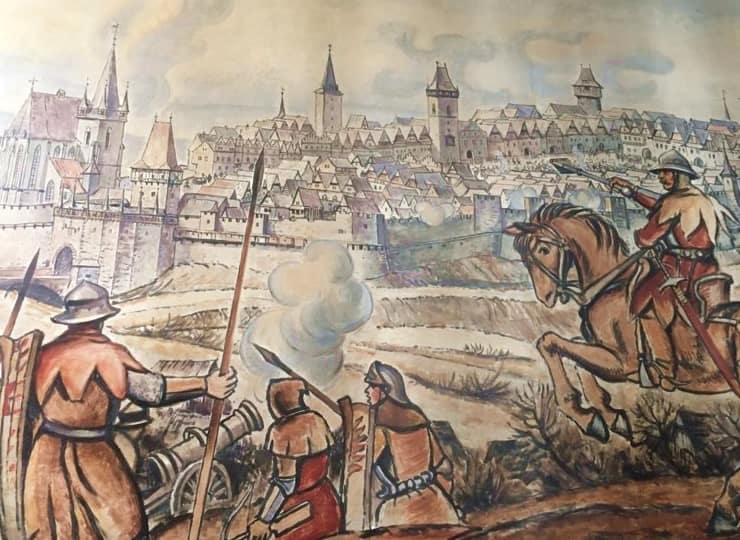Regional Museum in Slaný
Visit Regional Museum in Slaný — a local ethnographic museum with archaeological, historical and ethnographic collections, and Ethnographic Museum of Slaný Region in Třebíz — an open-air museum with well-preserved examples of a traditional central Bohemian village.
Welcome to the Slaný Museum which is situated in a former Piarist College founded in 1658. This building served its scholastic purpose until 1939 when a new building of a grammar school (gymnasium) was opened.
Museum history
The museum in Slaný was founded in 1885. Its residence was changed several times until 1940 when it was definitely placed into this building.
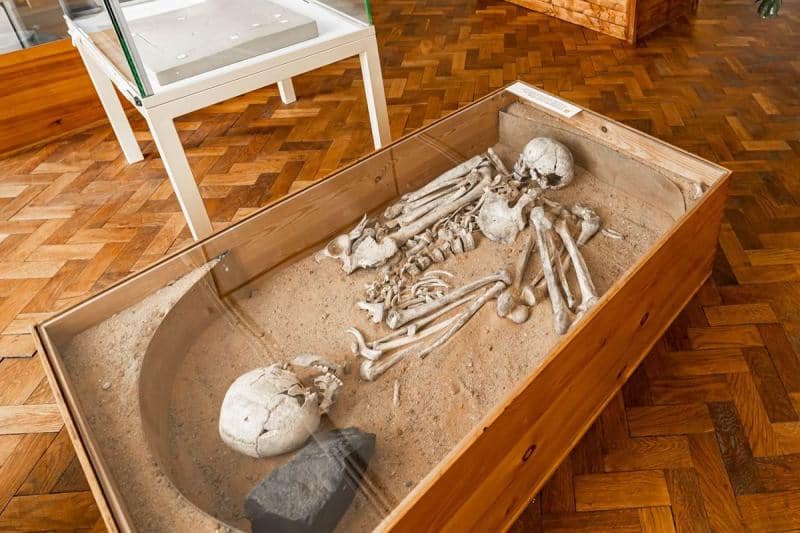
From the very beginning it was built as a local history museum. Archeological, historical and ethnographic collections outweighed. Finds from the Slánská Hora Hill (Slaný Hill) formed a basis of an archeological collection and these were enlarged by a research of the museum and filled out with finds from other localities of the Slaný area from the first years of a museum activity.
Fraternity relics from Slaný and church relics that lost their place after church interiors had been modernized formed a basis of historical collections. The most characteristic collections for the museum are the ethnographical ones and they were adapted particularly after the Ethnographical Czecho-Slavonic Exhibition which took place in 1895 in Prague and where the Slaný district had its own pavilion.

Up to now we are still reminded of it through the interior of a peasant room in an ethnographical part of a museum exposition which represents a valuable historical document. This basis was complemented by gifts of citizens, purchase and field research.
During the 1920s and 1930s a collection fund of the museum was enlarged also by collections of extinct museums in Koleč and Zvoleněves.
At the same time also a collection of paintings began to be formed with an idea that it should have become a basis for a future town gallery. The Navrátil Society set itself the task of establishing this gallery. However, these plans were not put into practice, so the collection became a part of the museum funds. Several generations of voluntary collaborators associated in a museum society managed to build up one of the largest collection funds in Central Bohemia.

In fact the Slaný Museum became a regional historical-ethnographical museum because natural historical collections were formed only marginally. In recent years this concept was strengthened by building up a specialized Ethnographical Museum of the Slaný Area in Třebíz (a subsidiary of our museum).
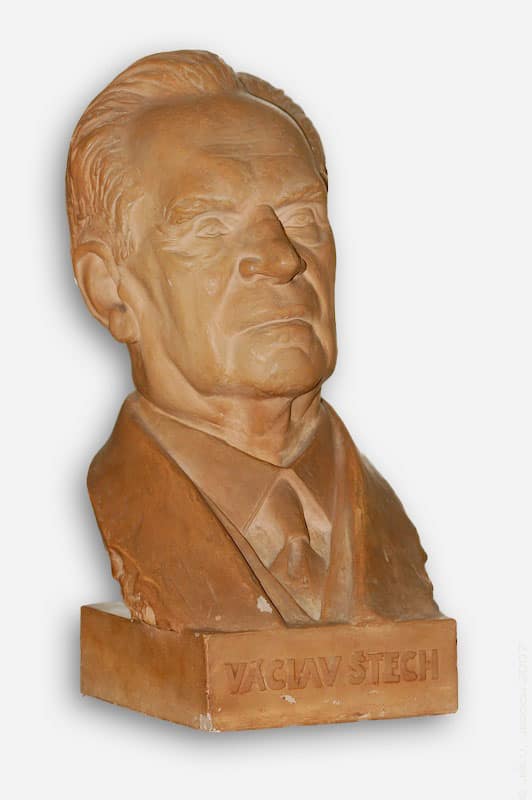
Permanent expositions present the history of the town and its neighborhood. The other rooms are devoted to short-time exhibitions, mainly to fine arts and thematic exhibitions.
We give permanent attention to Václav Štech, a founder of the museum. This gifted young teacher has great desserts for the development of culture life in Slaný. Thanks to him a theater was built (1883) and a museum (1885) and a library (1897) were founded in Slaný. He became the first custodian of the museum. Furniture and other things on display in this room are gifts of the Václav Štech family.
Our expositions
A gallery of paintings in a corridor of the museum comes from the Budenický castle and represents a family gallery of dukes Kinský. This gallery was established between 1757 and 1759 and an author of the paintings is Jan Michael Millittz.
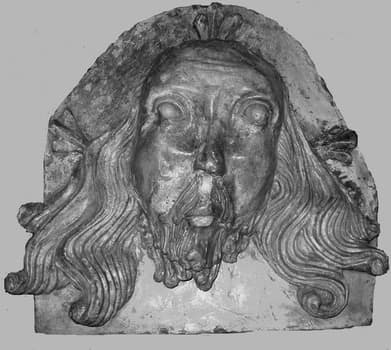
A silver antependium which comes from the church of the Holy Trinity in Slaný belongs to precious relics. It is a good example of art and craft work. A gothic bolt representing Christ’s head is a plaster cast of an original that can be seen in a presbytery part of the dean’s church of St. Gothard.
Slaný entered the Czech history also by its Hussite tradition. Already at the beginning of the Hussite revolution it was one of the five chosen towns. There is a star placed at a spire of a town hall as a symbol of identification of the town. The Hussite period is recalled to us also by a Hussite helmet, so called “Sali”, which was found in a well at the square. Church relics are represented by baroque embroidery of chasubles and liturgy instruments.
Fraternity relics are demonstrated by small journeyman’s products, fraternity treasuries, a collection of wrought padlocks and fraternity emblems (in a scepter-like shape).
At a collection of displayed furniture of middle classes, pay heed to interesting inlaid work. A baroque escritoire, spinet and some chests displayed belong to the most precious collections of our museum. A collection of displayed tiled stoves as well as chinaware and stoneware is precious too.

Archeological collections are represented by an exhibition The Road 1/7 Prague — Slaný in a view of archeologists. It gives information on finds that were gained in advance by archaeological research. The height habitation Šárka in Prague 6 – Liboc, the wooded height Homolka by the village Stehelčeves, the Slavonic site of a fortified settlement Budeč, the Přemyslid site of the fortified settlement Libušín belong to important archeological localities. The settlement Na hrudném by the village Knovíz dates back to the Younger Bronze Age. The locality Slánská Hora Hill at eastem outskirts of Slaný was settled for five thousand years. However, the settlement was not continuous but with a lot of discontinuations. Nevertheless, this does not alter the fact that particularly the settlement of Slánská Hora Hill made our town famous throughout the archeological world.
Rich ethnographic collections of our museums are demonstrated by painted and inlaid furniture displayed in corridors and an adjacent room. We have on display only those pieces of furniture that come by their origin from the Slaný area. Pay heed to various artistic elements which appear in decoration. An interior of a peasant room from the Slaný area that was displayed at the Ethnographical Czecho-Slavonic Exhibition in Prague in 1895 is saved as an independent exhibit.
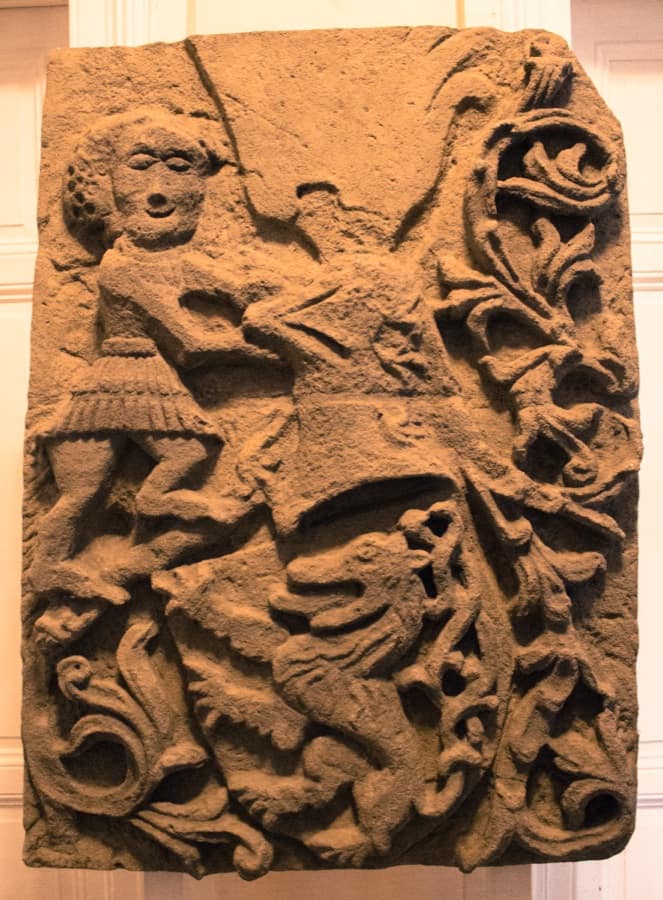
A natural history department is aimed at flora and fauna protection, observation of endangered species of birds. It is further aimed at care of protected parts of nature. As far as our town is concerned a protected area is the Slánská Hora Hill, basalt Tertiary eruptive rock, where an instructive path the Slánská Hora Hill was built in collaboration with conservationists. It serves for short-time recreation of local citizens as well as visitors of Slaný. There are geological and mineralogical specimens of rocks from the Slaný area displayed in show cases.
Upon entry to the museum a capacious painting by Alois Moravec who depicted the town at the time when it was besieged in 1425 will definitely attract your attention. After the death of Jan Žižka there was a rift within the Hussite movement. Citizen’s of Slaný endorsed an opinion of moderate Prague citizens. After a failure by Prague Táborists arrived at Slaný at the beginning of April in 1425. They conquered the town after heavy casualties and burnt it down. The Hussites also burnt a primate and town councilors to death at the square in butchers’ shops. Three stone crosses in the paving of the square still recall this event up to now. Sandstone statues set in a wall recall remnants of gothic decoration of the former Prague Gate which was situated near the dean’s church of St. Gothard.
There is an exhibition room on the second floor of the museum building where artistic exhibitions take place.
One of the museum objects is Velvarská Gate, the only preserved gate from the town fortifications built in the pre-Hussite period (the end of the 13th — the start of the 15th century). A new exhibition of the city fortifications was opened there in 2021.
Chapel of the Engagement of Virgin Mary
A former college chapel devoted to the Engagement of Virgin Mary is a part of the building. The altar painting “A Dream of St. Joseph” is the work of the Italian painter Carlo Carloni from 1727. There are pictures of saints from a Franciscan monastery hanging on a wall. Baroque statues and angels from the sculptural group of St. Procopius are priceless. A portrait of a nobleman depicts the count Bernard Ignác Martinic, a founder of the piaristic college.

Visit us
Opening hours
The Regional Museum in Slaný is open to the public all year round.
| Monday | CLOSED |
| Tuesday | 9.00 — 16.00 |
| Wednesday | 9.00 — 16.00 |
| Thursday | 9.00 — 16.00 |
| Friday | 9.00 — 16.00 |
| Saturday | 9.00 — 16.00 |
| Sunday | 9.00 — 16.00 (June to December) |
| Public holidays | 9.00 — 12.00 |
Admission fees
- Adults: 50 CZK
- School expeditions, students, seniors: 40 CZK
- Children under 10 years: 30 CZK
How to get there
Regional Museum in Slaný
Masaryk square No. 159
274 01 Slaný, Czech Republic
Contact
Office, administration: +420 725 918 622
Guide, tour bookings: +420 725 343 028
E-mail: muzeum@muzeumslany.cz
